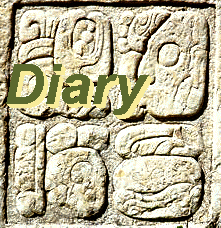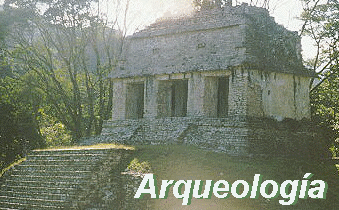Baja California
|
Andar tras mesoamérica : |
Latest Diary : Calendar |
Latest Poem : Index |
Archeology |
Baja California

The wild peninsula of Baja California stretches over a thousand miles from Tijuana in the north to Cabo San Lucas in the South, reaching from the temperate zones to the tropics. The tropic of Cancer actually passes right through the quaint town of Todos Santos on the Pacific coast.
Those of you who know world climate will not be surprised to hear that the peninsula is Mostly DESERT -- that's how the Earth is divided, deserts between the tropics and the temperates. But WHAT a Desert! Ragged mountains and sprawling flats. And with water on both sides of the long, skinny finger....
This magical peninsula is divided into two states, Baja California is the northern half, Baja California Sur is the southern state. NOTE: the name of the northern state is the same as the peninsula. There is Absolutely NOT a state named Baja California Norte. No. Not. Yes, when the southern half became a state a few decades ago, it was named Baja California Sur; but when the northern half became a state earlier, in 1951, it took the official name Baja California. Many gringos still mistakenly call it Norte, however. INcluDinG mE, I used to think that was its name. My brother, too. But our cousin Mike knew better.
For the tourist, the areas of interest on the peninsula can be divided into five or sixteen regions.
Camping, simple hotels, and luxury resorts -- history, ecology, fishing and beachcombing -- it's all here in Baja California.
- The northern border zone: The Touristic Corridor from Tijuana to Ensenada, as well as the inland hill town of Tecate, the desert capital city of Mexicali and the gulf resort town of San Felipe, embracing vacation spots on both coasts where no special tourist visa is required for a stay of up to 72 hours.
- The Pacific coast south of Ensenada: Santo Tomas, San Quintin, and including the spectacular mountains of San Pedro Martir (La Encantada) 9,000 feet above sea level -- the Parque Nacional Sierra de San Pedro Martir. NOTE: the Meling Ranch is back in business again!
- The Cataviña desert region with its weird and beautiful plants -- the Parque Nacional del Desierto Central.
- The mission of San Borja.
- Bahia de Los Angeles, one of the great desert beauty spots of this world, sparkling on the gulf of California (no bus access as of yet).
- The Vizcaino Desert, where, at Guerrero Negro, in February and March, you can whale watch in the vast lagoons.
- San Ignacio, an charming oasis town with its old mission, gateway to the rock art areas (you need a permit from the government officials there), i.e.:
- Horse/mule packing into the rock art canyons of the mountains north of San Ignacio -- para ver las pinturas rupestres -- to see the archeological paleolithic painted rock art from the ancient American peoples of this peninsula.
- Santa Rosalia, Mulege, Bahia de la Concepción, and Loreto, the central gulf coast with its mining, missions, boating, diving and fishing. (There's a modern airport at Loreto with regular airline service.)
- Mission towns in the mountains above Loreto.
- The laid-back big-city of La Paz.
- The madness of Cabo San Lucas, every jetsetters' condo dream nightmare.
- A calmer alternative: San Jose del Cabo.
- The town of Todos Santos on the Pacific coast. To the east rise the mountains of Sierra de la Laguna and its biosphere reserve -- an ecological experience for the long-distance hiker.
Cruising the Gulf of California aka Sea of Cortez aka Vermillion Sea is many yachters' and kayakers' dream vacation. You can take your own boat down or charter from La Paz and other towns.
Or just pull your truck or RV off the road by the beach and camp out.
Offroaders are in heaven but get stuck in the dirt all the time. BE Careful!
Surfing legends abound here, too.
First or second-class busses serve most towns. Ferries cross the gulf to Mazatlan (from La Paz) and Guaymas (from Santa Rosalia). But they charge several hundred dollars for a car!
MAKE SURE YOU GET YOUR TOURIST CARD (visa usually good for 180 days) AT THE BORDER! Right there at the Mexican customs office when you cross.
Towns & People | Culture & Nature | Countryside & Metropolis | Ancient, Modern & Colonial Places | Valley and Mountain |
Andar tras mesoamérica : |
Latest Diary : Calendar |
Latest Poem : Index |
Archeology |

|

|

|

|